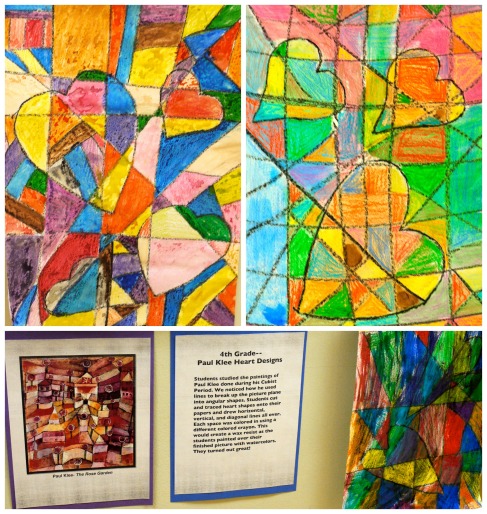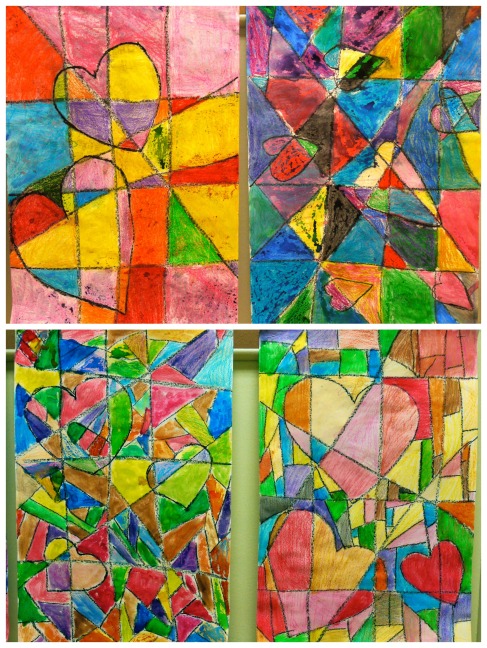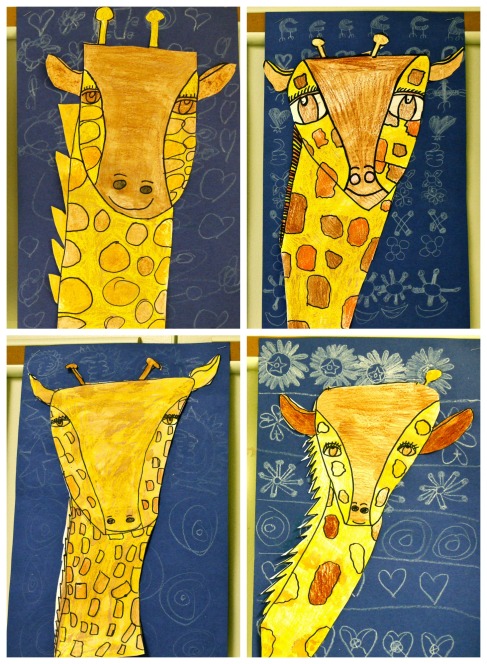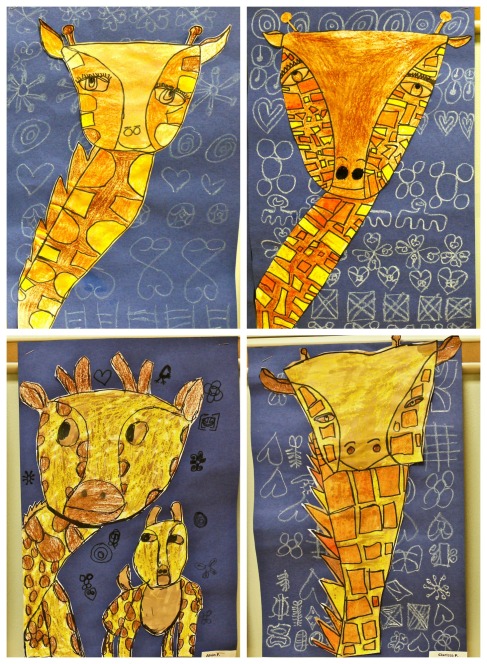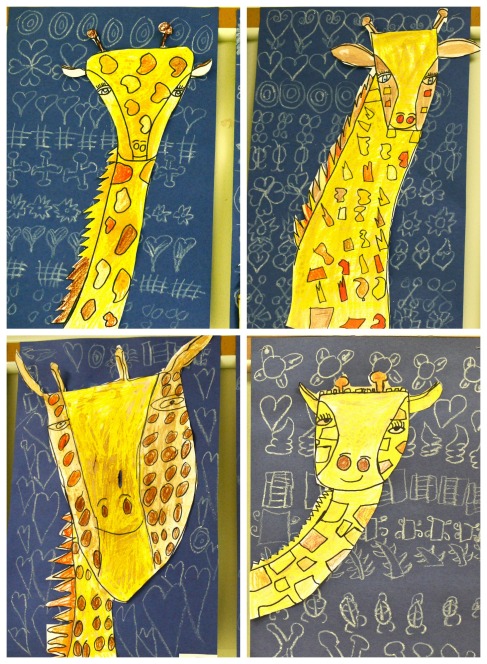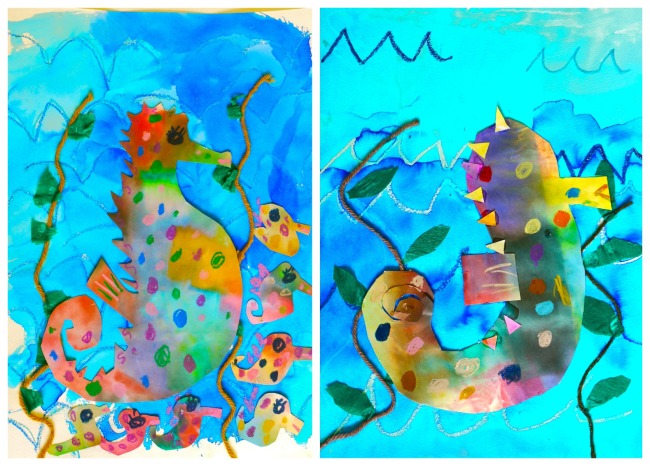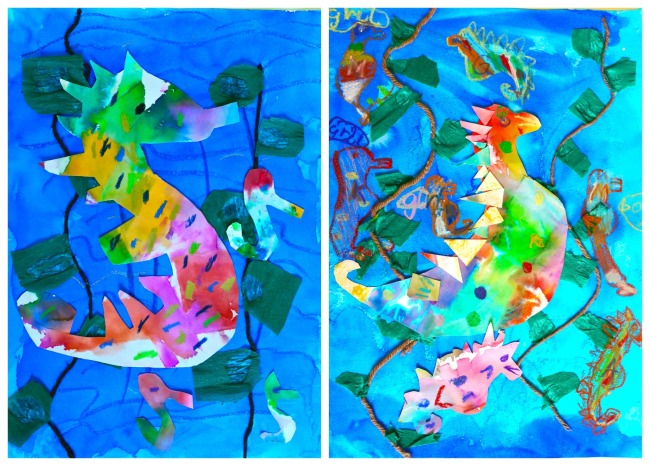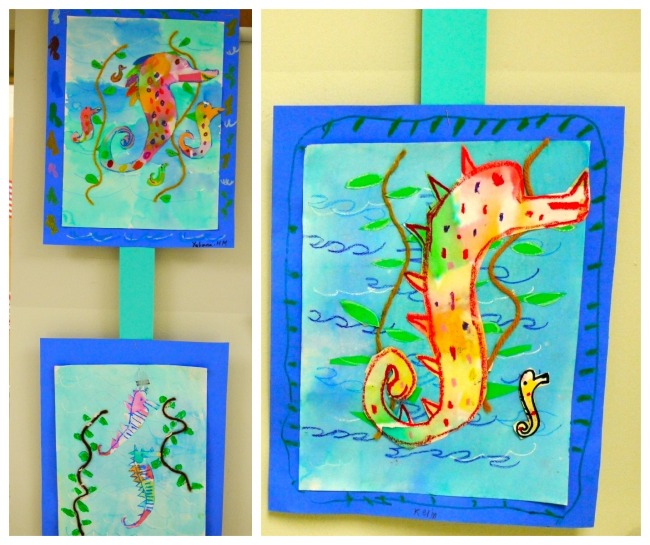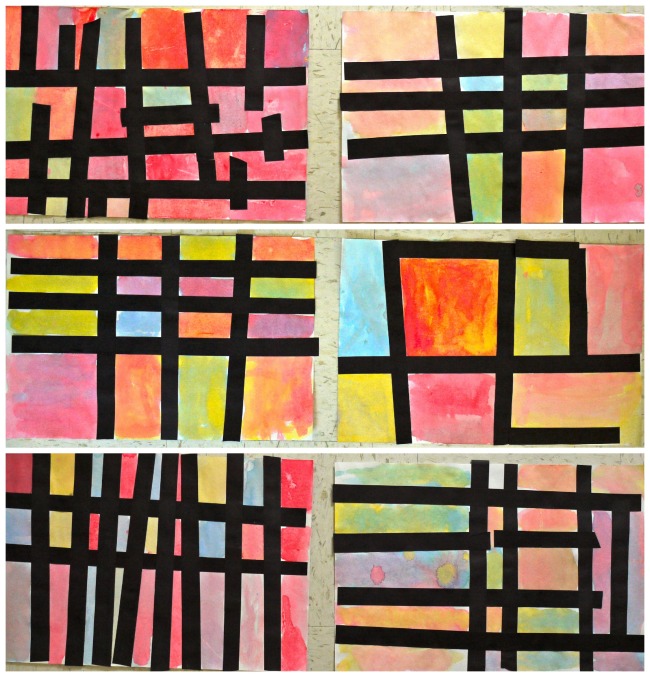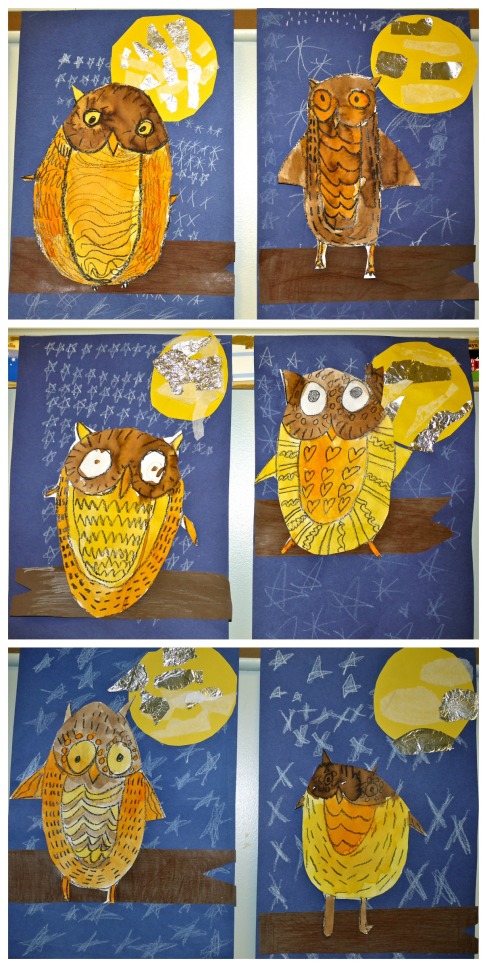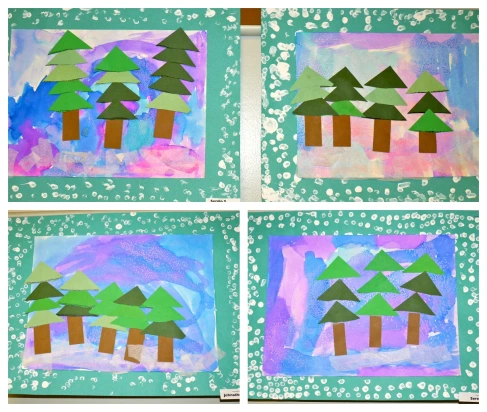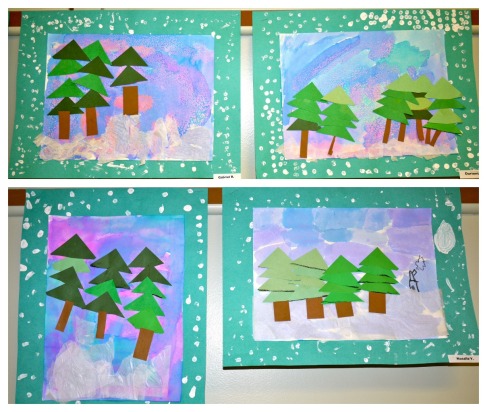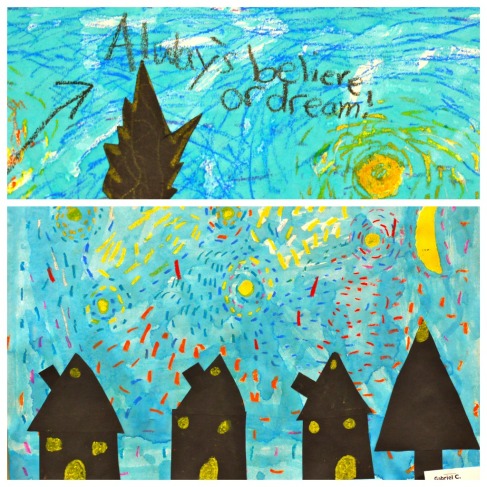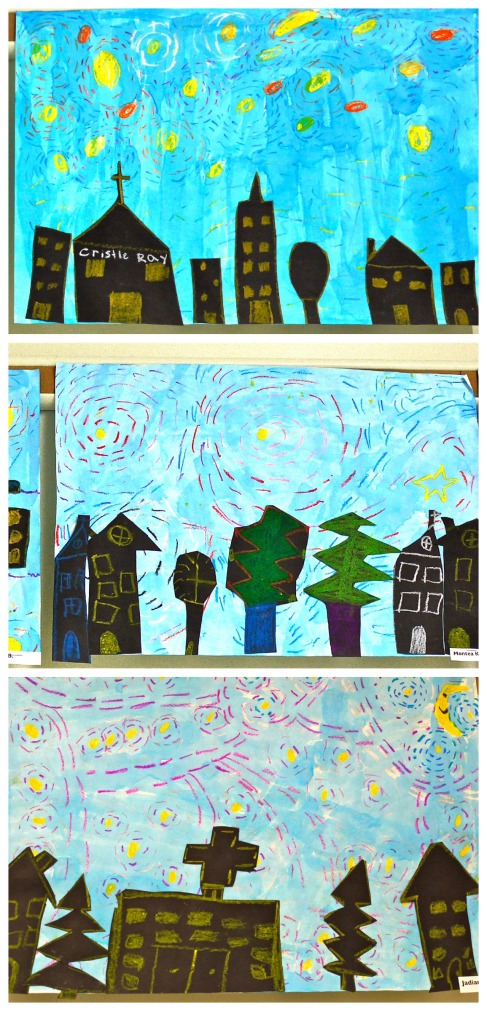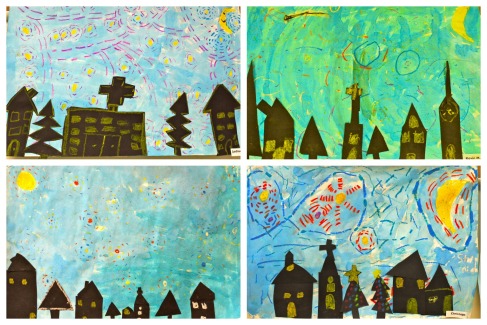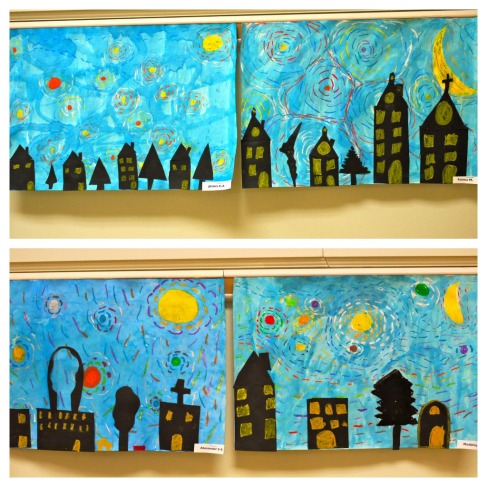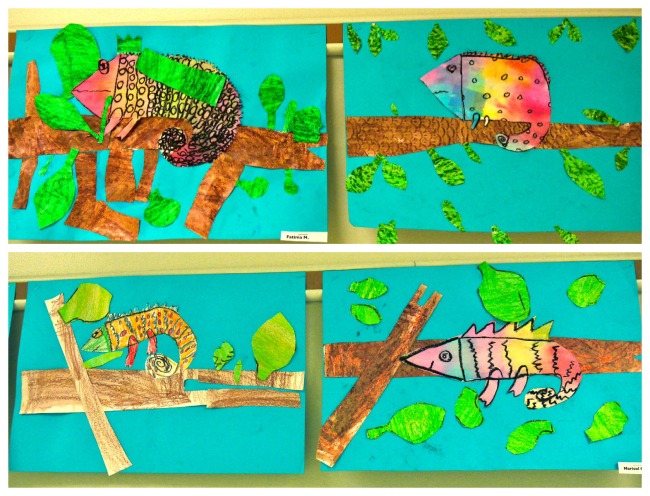
Continuing with the literature-based art theme, here are some spectacular chameleons created by my 2nd grade students last spring during our lizard unit. During this unit, we read two great chameleon books:
Chameleon’s Colors by Chisato Tashiro
A Color of His Own by Leo Lionni
We also viewed some National Geographic Kids videos of real chameleons changing colors. The kids thought they were pretty much the coolest lizards in all creation.
They prepared their chameleon paper by brushing water over multi-colored bleeding tissue paper squares. They used texture rubbing plates to create a texture for their leaf and branch papers using crayons. These papers were then painted over with watercolor, creating a textured wax resist.
The next class, students practiced their chameleon drawing skills using a step-by-step drawing sheet, a lifesaver for my easily-frustrated students! Yet notice how each chameleon still has its own personality. Once comfortable, students created their final drawing on the prepared colorful paper. After cutting a large branch, leaves, and adding their chameleons to their composition, the masterpieces were complete.
Check back later for the 3D lizards from this unit!
These chameleons were inspired by this drawing lesson found on Art Projects for Kids.
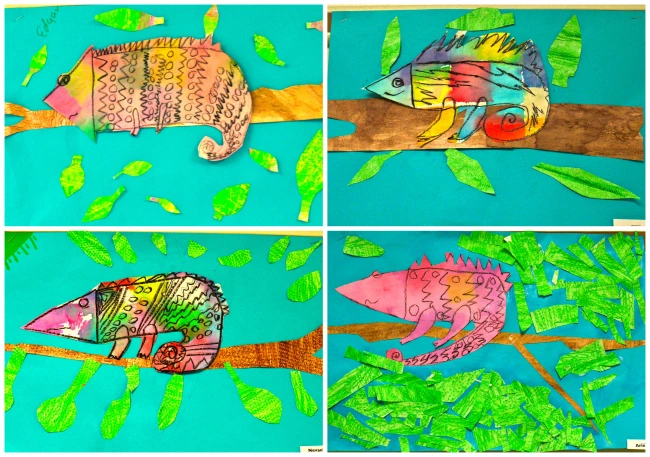
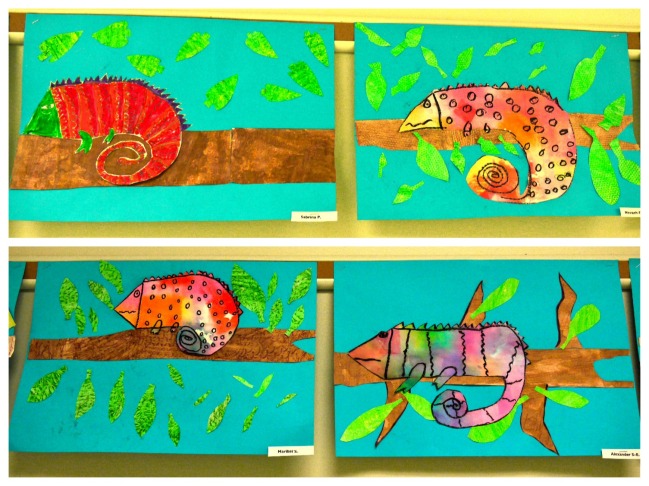
Tags: 2nd Grade, animals, art + literature, chameleons, cross-curricular, elements + principles, Leo Lionni, lizards, nature, science, texture, tissue paper, watercolor

